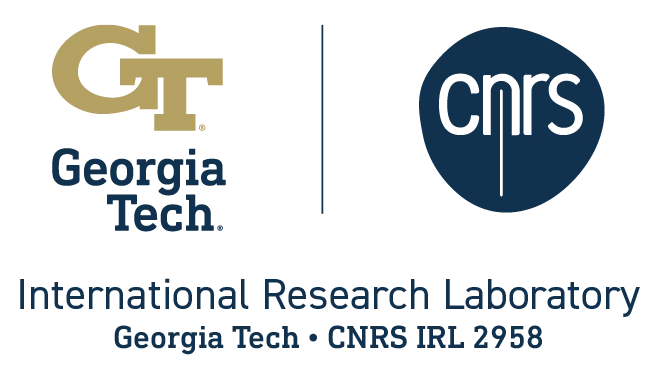Research Overview at Declercq’s Lab
Nico F. Declercq’s lab is involved in a broad spectrum of research areas, mainly focusing on acoustics, ultrasonics, and nondestructive evaluation (NDE). The lab’s research can be categorized into several domains, each contributing to advancements in both theoretical and applied sciences. Below is a selection of research areas pursued. The lab’s contributions have advanced scientific understanding in acoustics and ultrasonics and provided practical solutions for industries ranging from aerospace to environmental management. These endeavors continue to push the boundaries of what is possible in acoustic and ultrasonic research, contributing to safer, more efficient technologies across multiple fields. More information can also be found on the team’s website: declercq.gatech.edu
Wave Propagation in Anisotropic and Piezoelectric Materials
One of the foundational areas of research in Declercq’s lab is the study of wave propagation in anisotropic and piezoelectric materials. His pioneering work on the interaction of inhomogeneous waves with piezoelectric materials has enhanced the understanding of how mechanical stress and electric fields alter wave velocities and polarization, particularly in acousto-optic devices.
This research has impacted the development of Bragg cells, laser light steering technologies, and advancements in sonar systems under high-pressure conditions. By examining the role of piezoelectric stiffening in wave propagation, the lab has also contributed to optimizing surface acoustic wave (SAW) sensors for applications such as torque sensing and mass sensitivity in piezoelectric resonators.
Diffraction and Surface Wave Interactions
Declercq’s explanation of backward beam displacement in ultrasonic waves interacting with corrugated surfaces has filled a significant gap in understanding wave phenomena first observed experimentally in the 1970s. His theoretical work explained previously misunderstood experimental results and predicted new conditions under which backward displacement occurs.
While primarily in acoustics, this research has influenced fields such as optics, quantum mechanics, and metamaterials, where beam displacement effects are studied in contexts like surface plasmon resonance and neutron wave reflection.
Archaeological Acoustics
The lab has conducted notable work in archaeological acoustics, focusing on ancient structures such as the Greek theater of Epidaurus and the Mayan pyramids at Chichen Itza. Declercq’s studies at Epidaurus revealed that the theater’s curved limestone rows acted as an acoustic filter, allowing for apparent sound propagation from the stage to the audience.
Similarly, research at Chichen Itza showed that the stepped structure of the Kukulkan Pyramid produces a distinctive chirped echo when clapped at the base. These discoveries have led to a broader understanding of how ancient civilizations designed their architecture to enhance auditory experiences, influencing both modern acoustics and the field of psychoarchaeology.
Nondestructive Evaluation of Composite Materials
In nondestructive testing (NDT), the lab has developed advanced techniques for damage detection in fiber-reinforced polymers (FRPs) used in high-performance industries such as aerospace and automotive engineering. The lab has contributed to real-time damage detection in materials subjected to fatigue and impact loading by employing methods like Lamb waves, infrared thermography, and X-ray tomography.
This research is crucial for maintaining the structural integrity of lightweight composite materials in critical applications such as hydrogen-powered aircraft and automotive components.
Ultrasonic Techniques for Environmental and Industrial Applications
Declercq’s lab has also pioneered research in the characterization of liquids using ultrasonic waves, which has applications in environmental monitoring and industrial processes. The lab’s work on the Schoch effect has been utilized to distinguish between liquids in closed containers through non-invasive methods, aiding industries such as hazardous materials management and food safety.
In addition, the lab has explored the application of ultrasound technology in preventing biofilm formation and scaling in water systems, offering eco-friendly alternatives for maintaining the efficiency of industrial water treatment and heat exchange systems.
Structural Health Monitoring with Ultrasonic Guided Waves
A key area of research in the lab is using ultrasonic guided waves (UGW) for structural health monitoring (SHM). This technology is essential for ensuring the integrity of structures like composite pressure vessels in the aerospace and automotive industries. The lab’s methodologies have been integrated into systems for monitoring real-time damage, ensuring the safety of hydrogen-powered vehicles and other high-stress applications.
By incorporating machine learning techniques, the lab has refined SHM methods, allowing for more precise damage localization and enhanced reliability in detecting structural flaws under operational noise.
Finite Element Method (FEM) in Ultrasonic Wave Simulations
The lab has made significant contributions to the simulation of surface acoustic waves using the finite element method (FEM). This research has provided detailed insights into wave behavior at solid-fluid interfaces, improving the accuracy of simulations in fields such as non-destructive testing and environmental acoustics.
Studies in this area have addressed wave scattering, transmission, and reflection in complex structures, impacting various applications, from material testing to environmental monitoring.
Collaborative THz Research
In collaboration with teams led by Citrin and Locquet, the lab has also engaged in research focused on terahertz (THz) technology. These studies involve the interaction of THz waves with materials for applications in imaging and spectroscopy. This ongoing collaboration has the potential to impact a variety of fields, including material characterization and biomedical diagnostics, where THz technology offers non-invasive and high-resolution imaging capabilities.
